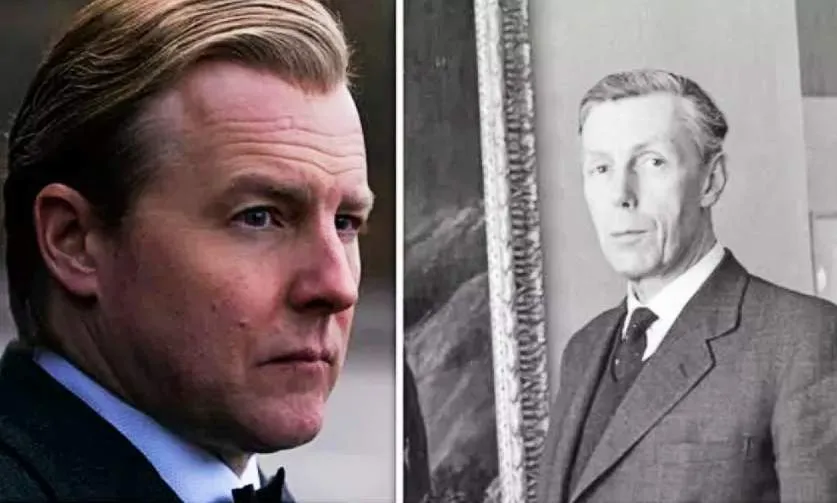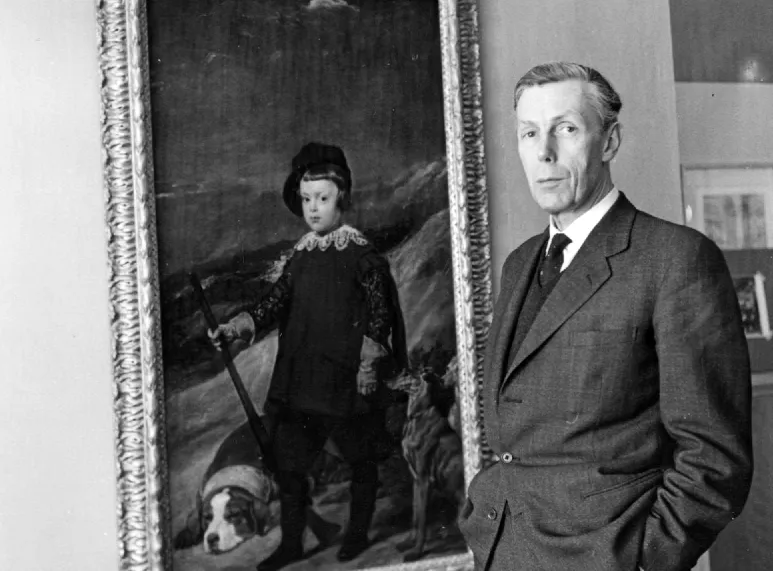Anthony Blunt: The British-Russian Spy Who Collected Royal Secrets
Queen Elizabeth's art historian Anthony Blunt was a knight, an authority on 17th-century painting, and a ruthless Soviet spy at the heart of Britain’s establishment.
Blunt’s treachery, dramatized on Netflix’s The Crown, is all the more remarkable in that it carried on for decades until an extraordinary tip-off from the FBI led British intelligence to the doors of the palace.

The Crown & the spy
Back in 1963, Michael Straight, the American editor of New Republic magazine, was offered a post as an arts endowment advisor with the Kennedy administration in Washington, D.C. He’d need to be vetted by the US security services before taking on the role, however, a stipulation that caused a few sleepless nights.
Straight, the son of an investment banker and an heiress, decided to come clean about his past. He told the FBI that Anthony Blunt had recruited him as a Soviet spy while they were both at Cambridge University in England during the 1930s.
"I had made my break in 1941," Straight recalled in his autobiography, but the journalist learned through contacts that Blunt had been a British Army officer engaged in intelligence work throughout World War II. In fact, Blunt was a double agent operating simultaneously for the British spy service MI5 while tipping off the Soviets about counterintelligence operations. The FBI duly reported this to MI5, opening an uncomfortable chapter in Britain’s espionage history.
“The management saw it as a dreadful embarrassment,” MI5 whistleblower Peter Wright recalled in his tell-all book Spycatcher (1987).
In addition to being the Queen’s art historian, Blunt was a senior MI5 operative during the war. The spy agency feared a loss of status following the FBI revelation. “Beyond this,” Wright added, “there was the terror of a scandal.”
"The brand new social experience where you activate your gaming skills as you train like a spy."
- TimeOut
Take on thrilling, high-energy espionage challenges across different game zones.


Britain’s spy catchers
Britain’s spies informed the Queen of Blunt’s suspected Soviet ties even before his confession in 1964. Some historians believe the royal family may have already known about Blunt’s Russian dealings as far back as 1948, begging the question: Why did Moscow’s spy remain in the Queen’s service right up until his retirement in 1972 at the age of 65?
There was a palpable fear of communism in Britain and the US during the Cold War. The nuclear arms race threatened lives and nations, and the UK-US relationship was strained as five British-Soviet double agents known as the Cambridge Five were slowly exposed - all of them connected somehow to the elite Cambridge University.
In 1964, MI5 confronted Blunt and offered immunity from prosecution in exchange for a confession. Blunt accepted. In a hush-hush deal, Blunt was also allowed to retain his sinecure as Surveyor of the Queen's Pictures, looking after the Royal Collection's art, which saved British spies another public humiliation.
Blunt’s Cambridge colleague Guy Burgess, who had ties to the Foreign Office and MI6, defected to Moscow in 1951 along with British diplomat Donald Maclean. MI6 counterintelligence expert Kim Philby defected in 1963. Blunt was the fourth British-Soviet spy to be exposed as a member of the Cambridge spy ring. The fifth was named by KGB defector Oleg Gordievsky as John Cairncross, a British diplomat and later MI6 operative who was never prosecuted.
At least two of the Cambridge Five spy ring, Blunt and Burgess, were gay, which at the time was a criminal offense in Britain. Genius codebreaker Alan Turing lost his security clearance after a conviction for gross indecency in 1952 yet it seems the establishment turned a blind eye to Blunt's sexuality.

Anthony Blunt: The making of a spy
What turned the Englishman? Blunt, born in Hampshire, visited the Soviet Union while a student at Cambridge and is believed to have been recruited as a spy and talent spotter in 1934 working for Stalin’s NKVD, the precursor to the KGB secret police. Blunt then joined the British Army in WWII and leaked military secrets to the Soviet Union.
Toward the end of the war, Blunt was sent on secret missions to retrieve art, jewels, and rare coins that had once belonged to Britain’s royal family. He also retrieved sensitive correspondence at the request of Britain’s King - father of Queen Elizabeth II. Blunt and Royal librarian Owen Morshead retrieved nearly 4,000 letters including correspondence between King Edward VIII (who later abdicated to marry American Wallis Simpson) and Prince Philipp of Hesse, Hitler’s art agent and henchmen.
The voluminous letters may have shed light on the royal family’s ties to Nazi Germany. Although Blunt secured the letters for the family, he is also believed to have copied them for the Soviets for possible use as blackmail, according to Russian spymaster Yuri Modin, the former controller of the Cambridge spy ring.

Anthony Blunt: Threats of a spy
The royals may have quietly accepted Blunt’s deceit as he had intimate knowledge of the family through their letters. In any event, Blunt was a third cousin of the Queen Mother, so it may have suited everyone’s interest to keep the spy secrets in the family.
In November 1979, however, PM Margaret Thatcher exposed Blunt in the House of Commons. An uproar ensued and Blunt was stripped of his knighthood within minutes.
The silence that greeted Blunt’s confession in 1964 temporarily diffused the scandal but it didn’t make the Soviet spy any less of a threat. In fact, some historians speculate that Blunt may have dabbled in blackmail again, this time involving the Queen’s husband, Prince Philip.

The Profumo spy affair
While Philip always brushed off any suggestion of impropriety, he was a member of the Thursday Club which met weekly for alcohol-fueled lunches that wrapped up well into the evening. Among his cohorts was David Ward, the society osteopath and artist at the heart of The Profumo scandal involving showgirls, secrets, and spies. It transpired that Ward may have painted an embarrassing picture of Philip.
Richard Aldrich and Rory Cormac, authors of The Secret Royals, recounted an interview with Ward’s assistant who recalled a member of the Royal household buying a picture for cash, 'no questions asked'. The purchaser was rumored to be none other than Anthony Blunt who’d carried out similar retrieval missions for the family in the past.
No evidence was found, however, and Blunt did not mention that particular painting in his memoirs, which were released long after his 1983 death. Blunt’s main regret, it seems, wasn't his work with the royal family. It was his involvement with espionage. He called spying “the biggest mistake of my life.”
SPYSCAPE+

Join now to get True Spies episodes early and ad-free every week, plus subscriber-only Debriefs and Q&As to bring you closer to your favorite spies and stories from the show. You’ll also get our exclusive series The Razumov Files and The Great James Bond Car Robbery!


Gadgets & Gifts
Explore a world of secrets together. Navigate through interactive exhibits and missions to discover your spy roles.
Your Spy Skills
We all have valuable spy skills - your mission is to discover yours. See if you have what it takes to be a secret agent, with our authentic spy skills evaluation* developed by a former Head of Training at British Intelligence. It's FREE so share & compare with friends now!
* Find more information about the scientific methods behind the evaluation here.


Stay Connected
Follow us for the latest
TIKTOK
INSTAGRAM
X
FACEBOOK
YOUTUBE